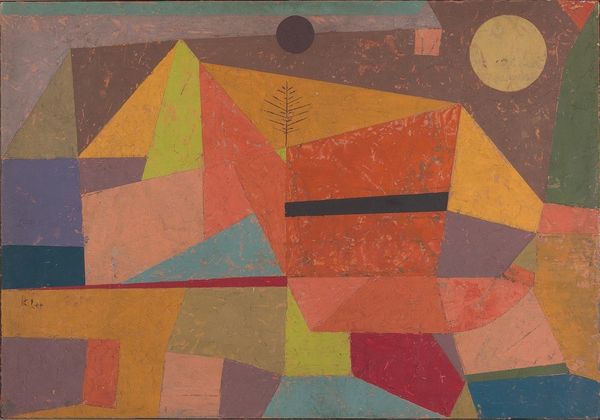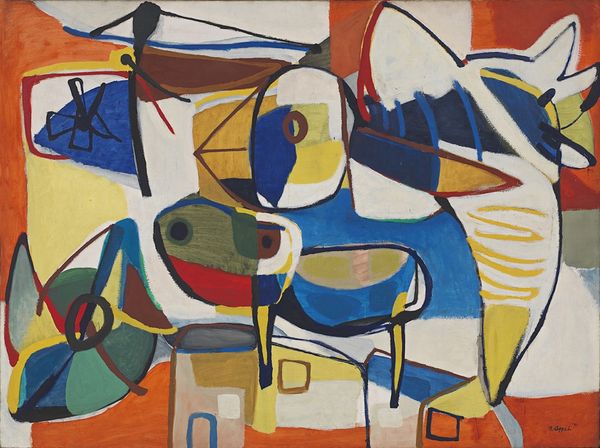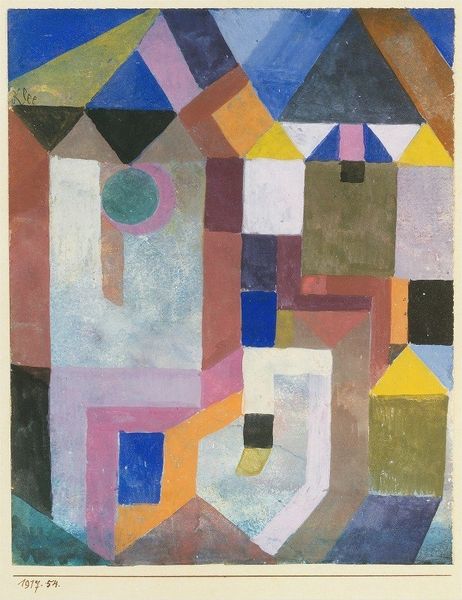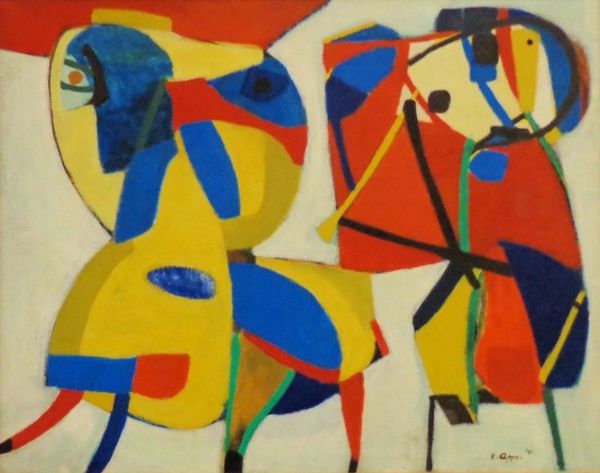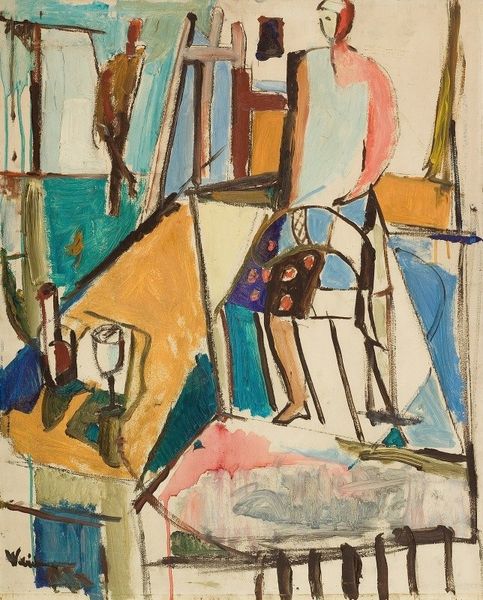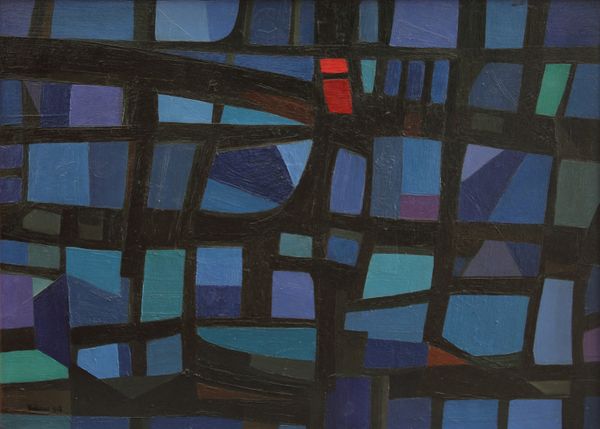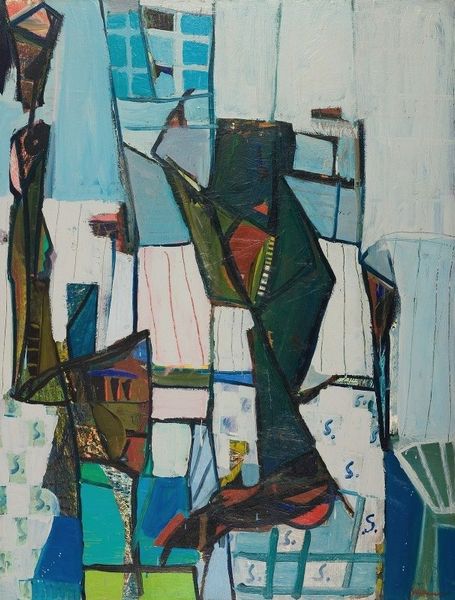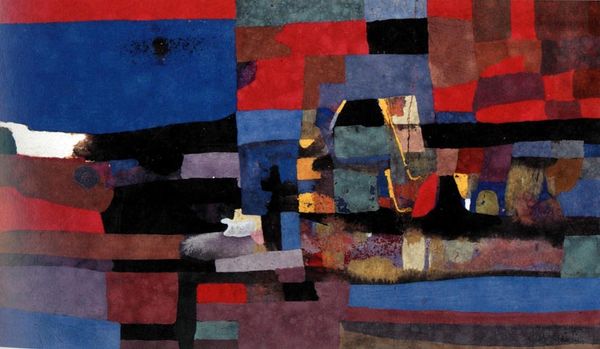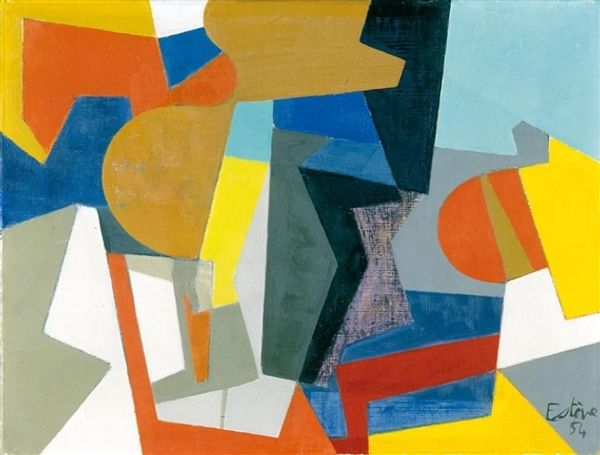
painting, oil-paint
#
abstract-expressionism
#
abstract expressionism
#
abstract painting
#
painting
#
oil-paint
#
form
#
geometric-abstraction
#
line
#
modernism
Copyright: Valerii Lamakh,Fair Use
Editor: Here we have Valerii Lamakh’s "Composition," an oil painting from 1955. I find the shapes and colors really striking; there's a push and pull between the cool blues and the warmer reds and oranges. What do you make of it? Curator: Lamakh's work, especially a piece like this from the mid-1950s, exists within a very specific socio-political context. Consider the Khrushchev Thaw occurring at the time in the Soviet Union; how do you think limited openings within artistic expression influenced this abstract work? Editor: I hadn't thought about it that way, but I see what you mean. There is a boldness to the color choices. So, this isn't just about form then; it's a quiet resistance, maybe? Curator: Precisely. Even the act of creating abstract art was inherently challenging the dominant Socialist Realist aesthetic. Consider the politics of display; where and how was this piece originally exhibited? What audiences had access to it? This influences its interpretation. Editor: Interesting! I hadn’t thought about the Soviet Union having any Abstractionist painters, because it was suppressed. So by exhibiting it he’s critiquing society? Curator: He's certainly engaging in a dialogue, albeit a cautious one. Even if viewed by small crowds, how might it have offered an alternative vision or a quiet form of dissent? The use of colour here becomes vital; what narrative might that orange section tell when compared to other similar avant-garde paintings coming from Europe? Editor: Now that's fascinating. The socio-political context adds such a deep layer of meaning. I thought it was *just* abstract. Curator: Exactly. Art and the politics of imagery is how we understand a piece and its value to us today. It makes you reconsider, right? Editor: It absolutely does! Thanks for offering this historical perspective to understand its cultural background!
Comments
No comments
Be the first to comment and join the conversation on the ultimate creative platform.
